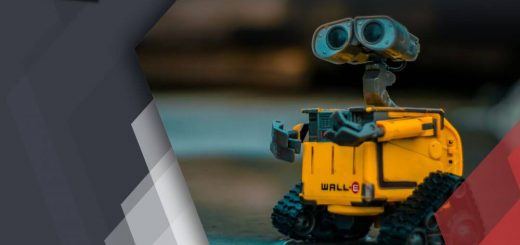3D Printing in Automobiles: All-in-One Database for Global Inventions, Innovations & Patents
3D Printing in Automobiles: A Handbook Of All Global Inventions & Recommendations; Manually Created By Experts.
Summary of this Handbook – 3D printing in Automobiles
Historical Perspective: Industrial 3D printing is at a tipping point and is about to go mainstream in a big way. It has been predicted that the industry will go through revolutionary changes when 3D printing becomes more widespread and by publishing this research we aim to accelerate this revolution. Technology has moved well beyond prototyping, rapid tooling, trinkets and toys; additive manufacturing is creating durable and safe products for sale to real customers in moderate to large quantities, thereby creating economies of scale.
Contemporary Perspective: This revolution began in 2014, when a survey of over a 100 manufacturing companies revealed that 11% of them had already switched to volume production of 3D printed parts or products; according to our definition we judge a particular technology to be mainstream when it reaches an adoption level of over 15%. Numerous companies in multiple industries are ramping up production in this way and we are confident that 3D printing is ready to emerge from its nascent stage to become a viable alternative to conventional manufacturing in multiple industries for various applications. More companies will follow the major players and with this revolutionary shift, companies should start engaging strategically to improve their offerings, revisit their operations and assess the implications it could have on the commercial ecosystem as a whole.
Table of Contents
Point to ponder: How fast this will happen?
The U.S. hearing aid industry converted to 100% additive manufacturing in less than 500 days, according to one CEO and not a single company that held on to traditional manufacturing survived. Although it is hard to imagine that this technology will replace the traditional ways of manufacturing, the recent advances in this sector suggest an imminent, drastic shift in the industrial landscape. The automotive industry has become an aggressive target for the development of new 3D printing
techniques.
Major Corporate Players: Key industry players which include but is not limited to Daimler, Bayerische Motoren Werke (BMW), Ford Motors, Volkswagen, Continental, General Motors, Robert Bosch and Mazda Motors have done significant patents filings in this technology domain.
Innovation Hotspots: The majority of innovations for 3D printing in the automotive industry have originated from the Germany, China and United States; with Germany being the leading country in research. The primary focus of German researchers seems to be Selective Laser Melting technology with majority of the patents being filed after 2012 in this technology. From Germany, BMW has filed most number of patents in SLM this technology, followed by Daimler. Majority of the patents filed in power unit technologies focuses on manufacture of engine components and exhaust systems. Robert Bosch and Daimler have filed patents that mainly focus on manufacturing of Power unit components. Particularly, Robert Bosch is focused primarily in manufacturing of fuel supply systems whereas Daimler is focused in manufacturing of engine and turbocharger components. Daimler seems to be relying more on polymer such as polyamide, polyurethane (PUR) etc., followed by metal alloys (in, particular) iron-based metal alloys.
Polyamide polymer was mainly focused in between the years 2007-2016 and was disclosed in significant patents filed by Daimler in that period. Iron based alloys were mainly focused between the years of 2015 and 2017. Reducing cost and time of manufacturing is the primary focus of Daimler. Volkswagen has started to manufacture various manufacturing aids including various types of gauges, jig and badges. It primarily focuses on polymers material and secondarily focuses on metals. Aluminium, Aluminium alloy and Magnesium are the major focused upon materials from 2014 onwards. Recently, China has also seen the most increment in patent filing in recent years with Stereolithography being the mostly focused technology and polymers being the mostly focused upon material. There are several new entrants in the automotive industry that has filed significant number of patents in 3D printing technology. One being Mazda Motors, a Japanese multinational automaker, started leveraging 3D printing technology with its focus in manufacturing of transmission parts followed by manufacturing of valves of a hydraulic device.
Other important industry player like Federal mogul has used 3D printing methods mainly to manufacture piston and pistons parts that face problems such as high mechanical load, use of expensive materials in order to get desired characteristics and complex tooling. In doing so, its primary concern seems to be improving the automobile part/component efficiency and reduction in their manufacturing cost. Michelin seems to be focused only on the Powder Bed Fusion techniques. It is utilizing these techniques especially for the tool making purpose such as lining blade for tire mold, tread molding element for a tire, and mold for making vehicle tyre. Among the materials, use of titanium, aluminium and steel has increased dramatically after 2011 primarily for manufacturing of automobile body/frame parts.
Until now, 3D printing has been realized best suitable for manufacturing serial parts and customization. Ease in constructing any desired geometry, single step manufacturing without requiring extensive assembly operations are important key features of 3D printing that made it easier for design engineers to make parts with desired properties and functions that were previously restricted by the constraints of conventional production processes. Also, the potential to integrate technologies like reverse engineering helps in designing models of its competitors’ vehicle parts/components. Such features of 3D printing enable the competitors in automotive industry to gain competitive advancements. Also, with the increase in level of penetration it seems to be that, soon, organizations will look forward to utilize 3D printing system for mass manufacturing of relatively small and special parts and that can help them cutting down time and cost for lower volume, specialty or customised items.
How this Handbook will Help?
For Research (Academic/ Corporate) Teams:
- Solve your technical problems/ hurdles by identifying, implementing and improvising any of the existing technical solutions applied to a similar problem in the past
- Identify other research groups working in the same domain – collaborate/compete efficiently
- Identify sponsors – enterprises that could apply the university-generated breakthroughs into new products and services
- Find additional applications of your invention
- Avoid reinventing the wheel and quickly answer the question pertaining to ‘Technology development Vs. Technology acquisition’
- Get ideas for further innovation by identifying white spaces and technology discontinuities
- Get involved with patent agents/ attorneys in patent preparation process to create most defensible and enforceable patents quickly
For Product Development Teams:
- Identify major markets
- Identify your competitors by markets/jurisdictions
- Monitor and identify alternative industries having potential
- Applications of your product
- Identify existing collaboration
For People Making Investment Decisions:
- Identify new investment opportunities in early-stages by observing rates of patenting activity in the various sector
- Develop strong cases for new R&D projects by observing competitive patenting activities
- Identify the right jurisdictions to make the investment in a given technology sector
For Hiring (Human Resource Management):
- Gather intelligence on key industry experts and competitor employees and use this information in relation to hiring and identifying experts
- Identify potential employees by looking at key inventors working independently and/or with academic institutes
- Identify potential employees by looking at key examiners involved with a given technology domain
- Identify consultant in relation to specific technical/ business problem in a domain
- Identify pertinent jurisdictions (states/ countries) where researchers are abundant
- Identify major law firms involved with filing and prosecution in a given technology sector as targets for external/ in-house IP consultants
For Mergers and Acquisitions:
- Identify better targets for mergers and acquisitions
- Understand the technical synergy possible between your company and the target by examining the comparison between your companies’ portfolio and competitors’ portfolio.
For Legal/ IP counseling:
- Easily identify major IP stumbling blocks (dark spaces) in a technology domain of client’s operation
- Identify industry segments where patent portfolio coverage of the client could be extended
- Draft better inventions (optimized scoped) and prosecute efficiently
- Provide specific direction about whether to pursue an invention, defensively publish the idea as a technical publication, or keep the invention a trade secret
- Determine patenting strategy of major players in a given domain (jurisdictions, type of claims, patent maintenance, etc.)
- Identify major law firms/agents involved in the given domain




